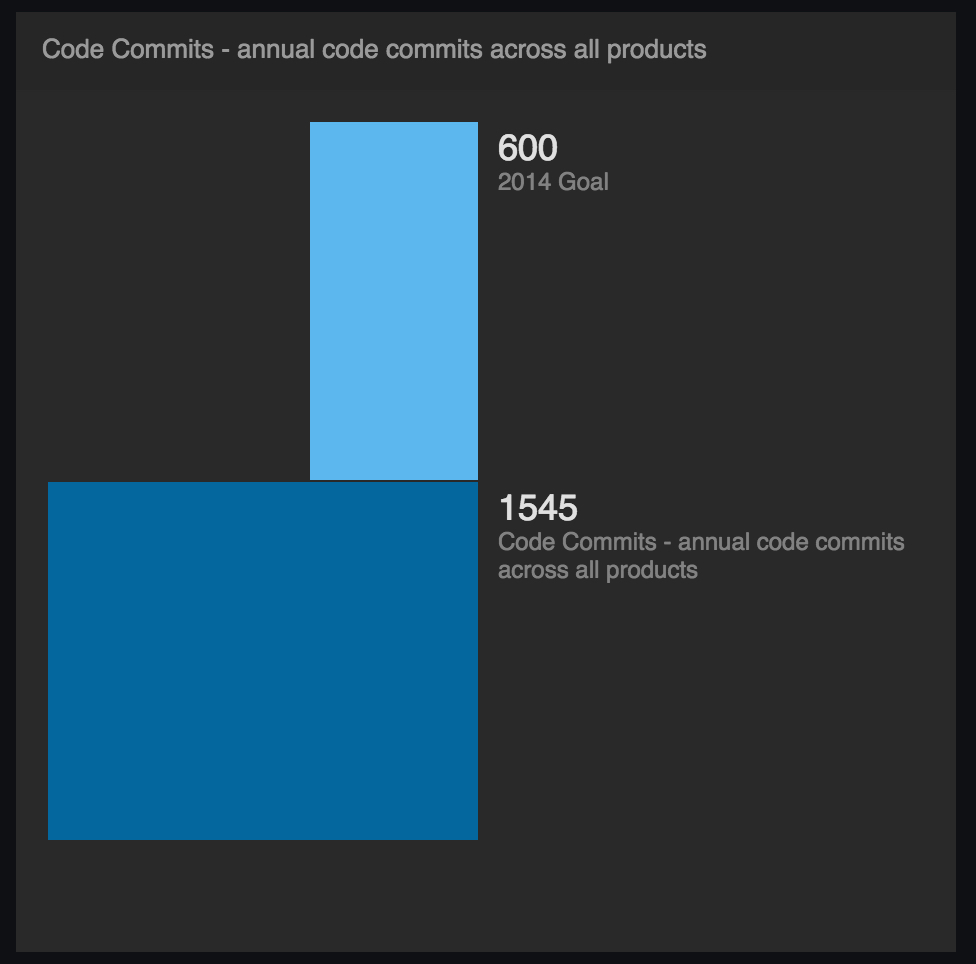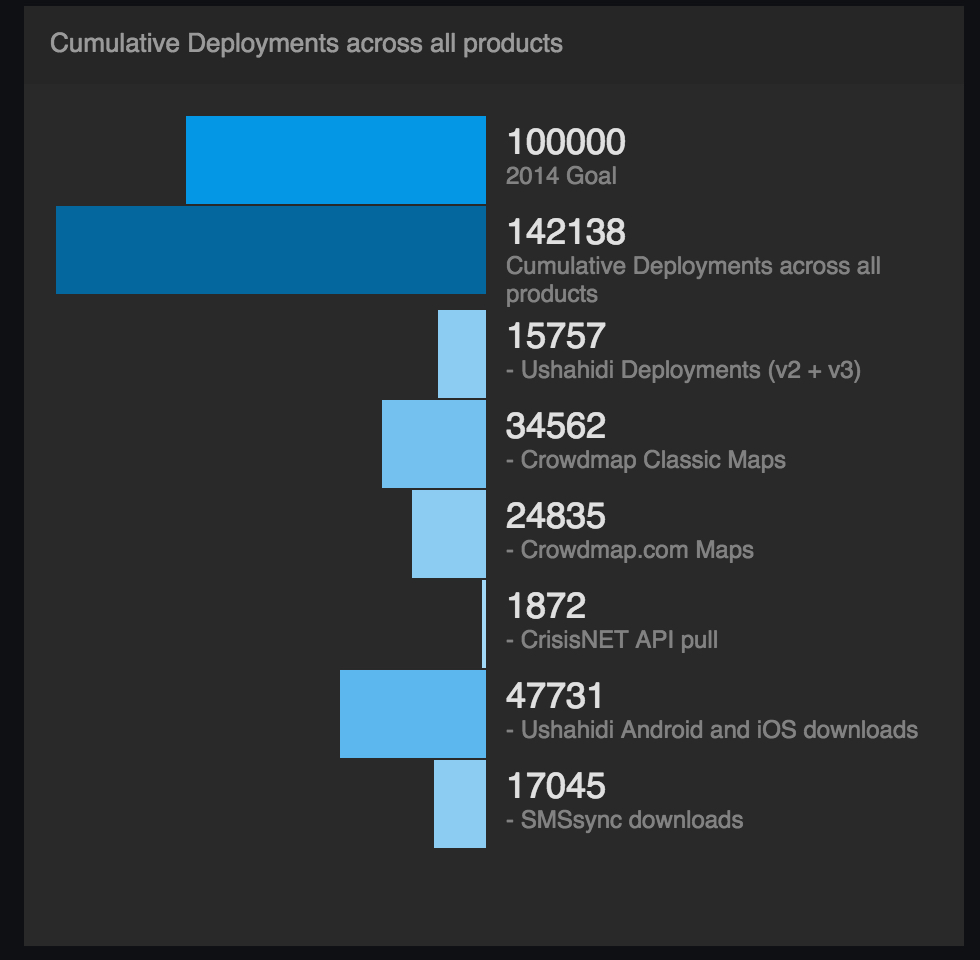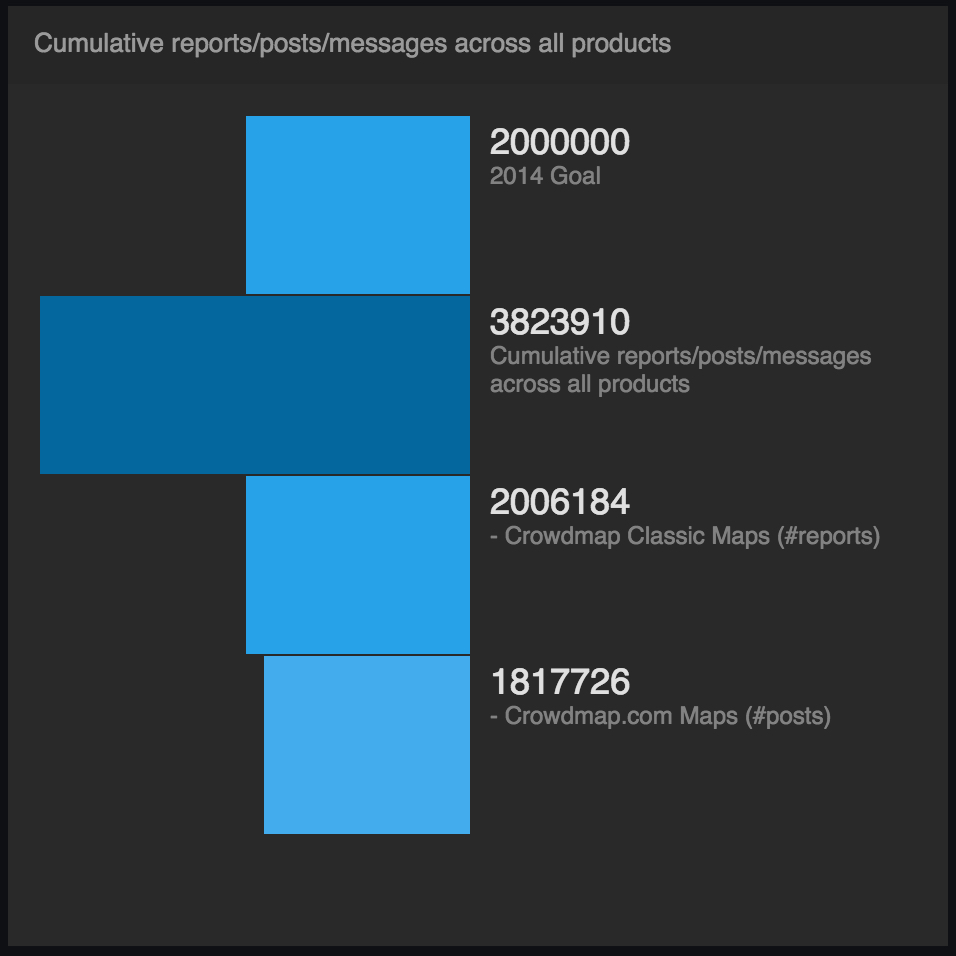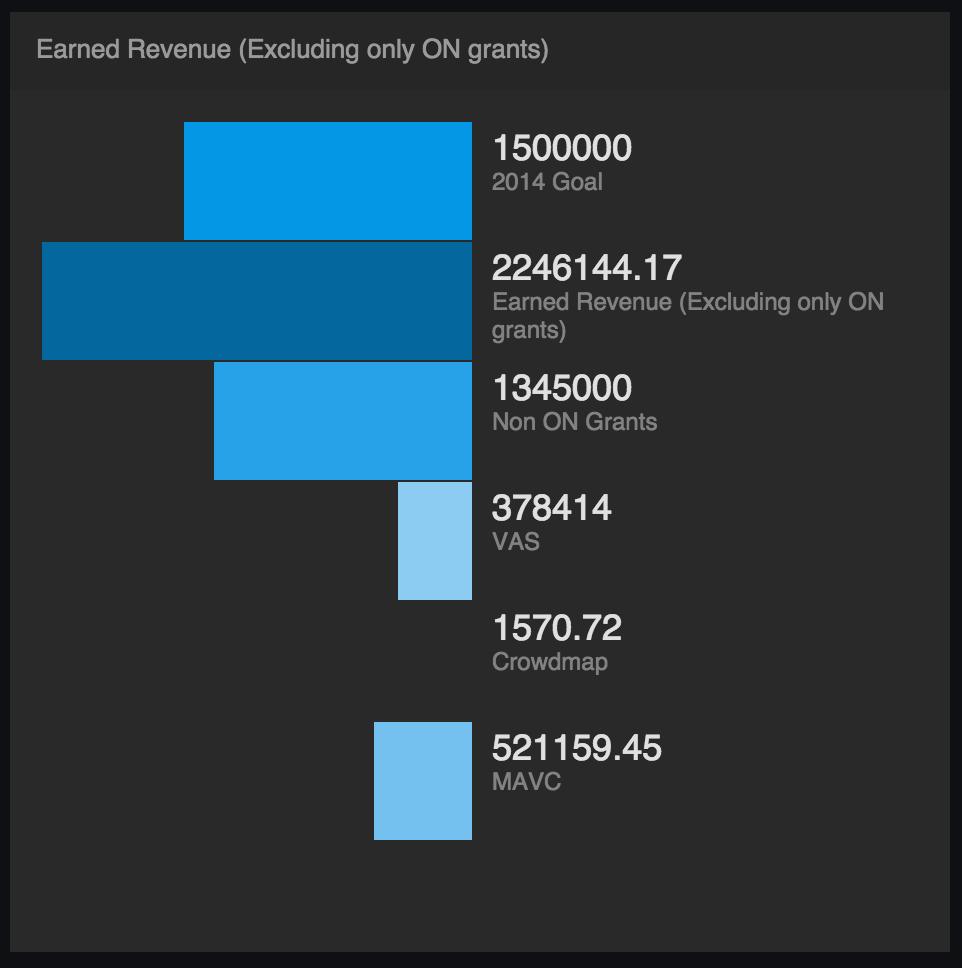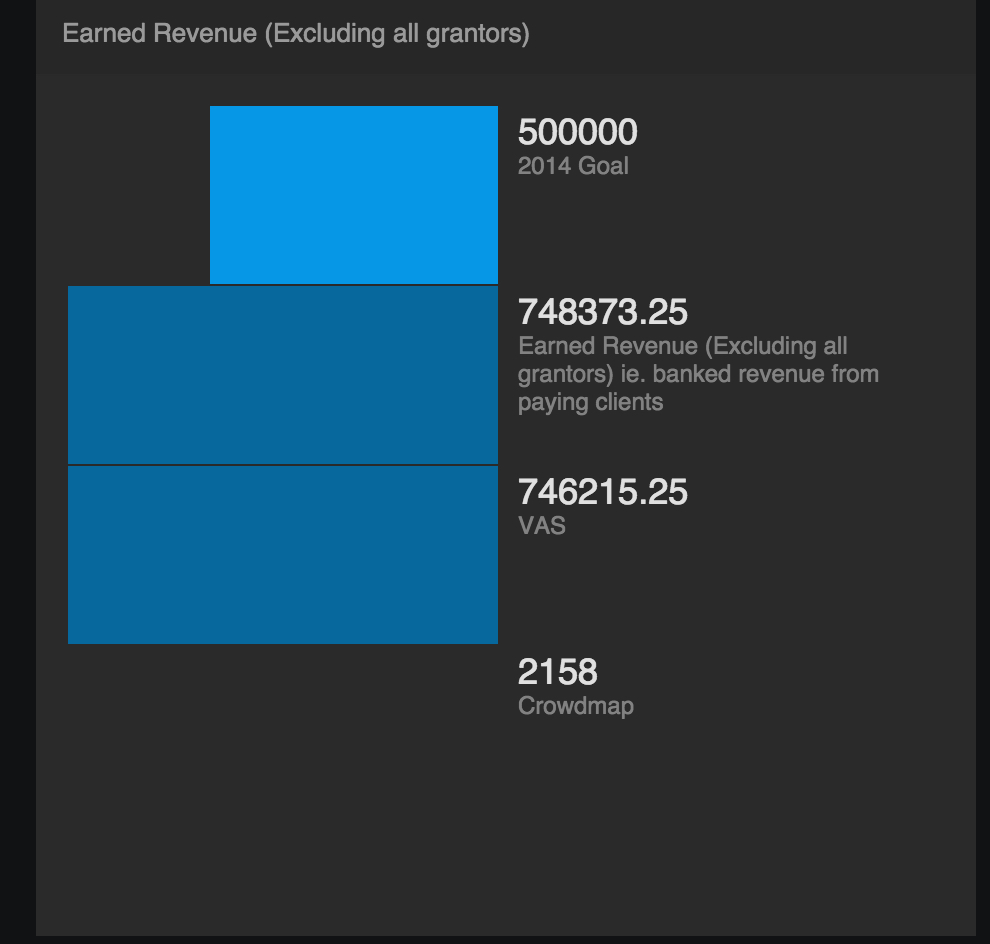Metrics, data, leadership, execution
As a distributed organization actively working across every continent (except Antarctica), we at Ushahidi have to communicate across an amazingly diverse set of cultures, languages, and perspectives. We have found one unlikely language that can translates across all, can quickly bring people from different nations together seeing eye to eye: the language of numbers, data. So much has been written about the potential value of data in every part of the organization -- from improving operations, increasing bottom lines, delighting your users and communities, to telling rich stories. As the age of data descends upon us, the importance of metrics in our own internal operations is becoming more apparent every day. Beyond just the raw figures, the process of developing metrics comes with the promise of bringing stakeholders together to determine "What do we want to achieve? What our destination? What information will help us navigate? What data will tell us that we have arrived?" This process of developing metrics facilitates a conversation around our users’ needs, our product teams’ plans, our leadership’s vision, and our donors’ goals in order to align the shared goals and set the right priorities. The art (and the hardest part) comes afterwards, answering: what numbers can we track that provide a view into where we are on this journey to achieve our vision. These conversations then percolate throughout our organization, with teams aligning their day to day work with Ushahidi's strategic goals.Support from Omidyar Network was critical for keeping our teams aligned around relevant metrics.
Picking the right metrics to coalesce the teams around a shared vision gets especially tricky when rapidly iterating to develop new technology. As we build our tools, we are constantly seeking and learning new information that guides us towards building useful products -- which means we often need to change direction and focus to meet our user's needs. To be effective with our metrics, we need to be able to evolve our metrics along with these changes in direction -- and we need our donor partners' support through this evolution. Additionally, for multi-year projects that are funded in advance it becomes imperative that our metrics strategically grow with us as the projects grow over the years. We are extremely fortunate to have the forward leaning, supportive team at the Omidyar Network as one of our donor partners and the partnership blossomed as we navigated our growth and evolved our metrics to focus on growth. With their leadership and insightful questions challenging us, we have been able to keep our metrics highly relevant to our vision.Our process, how the metrics actually integrate into our work
Last year, we setup the infrastructure needed to get our teams rallied around the strategic goals we had set with Omidyar Network: a set of internal dashboards on geckoboard that showed our progress towards those goals. One of those strategic goals was to increase the number of translations across our products in order to increase the geographical reach and improved accessibility to our tools. At about half-way through the year, we were lagging in the number of new translations and it was obvious on the dashboard. Juliana could quickly spot this weak spot on geckoboard and flagged the communications and community engagement teams to address it. We developed an outreach campaign and mobilized our community to develop more than 131 new translations. We could monitor the impact of our work as the numbers on our dashboard grew. The metrics data helped us to identify the problem early, it quickly got the team on the same page, and it helped us gauge how well our solution was working. That is precisely the kind of magic that can happen with the right metrics and the flexible core support provided to organizations like ours.And so with that, ladies and gentlemen, the numbers...
